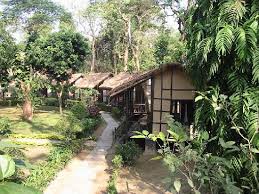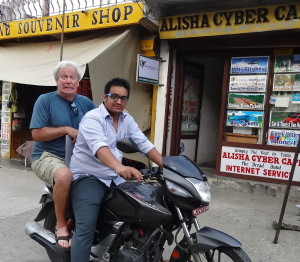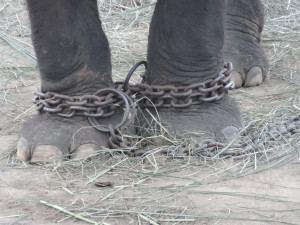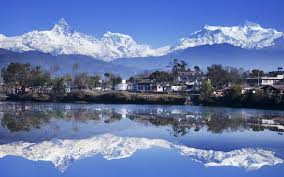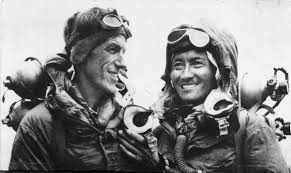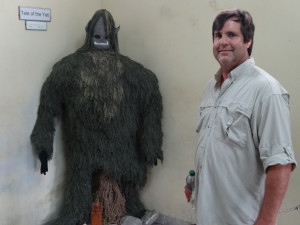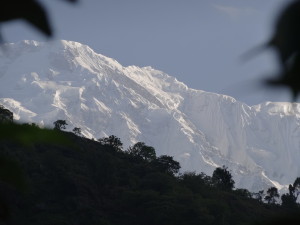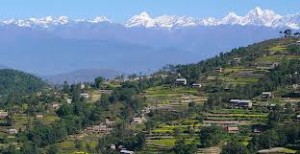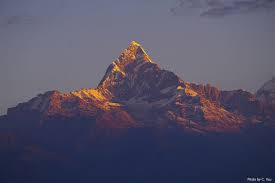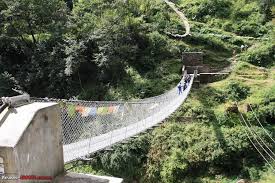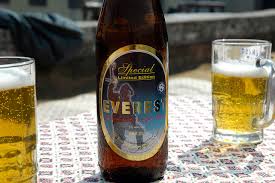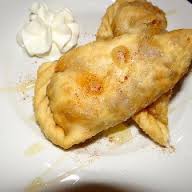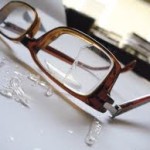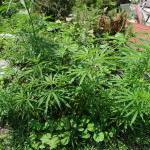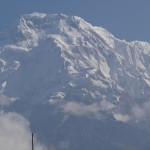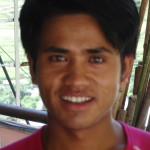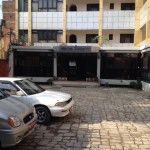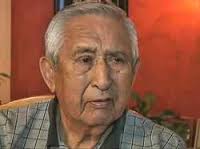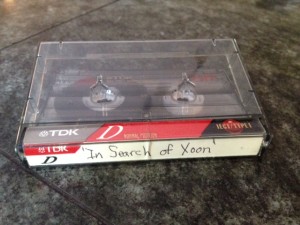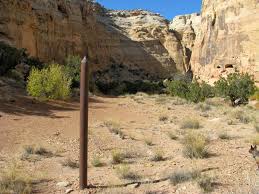Patrick and I talked about this when we were planning the trip – we figured that with a two-week adventure, we’re probably going to have at least one bad day. Today wasn’t really that bad, it just wasn’t that good. To start with, our driver picked us up in Pokhara at 7:30 and took us to the drop off point for the river rafting. We’re OK so far. Fortunately he hung around to see us off, but soon we discovered that the rafting trip was poorly organized, over-crowded and an over an hour late of the estimated time of departure . We decided that this raft ‘float’ in 90-degree temperature, with humidity to match, was not going to be that fun, so we hopped in the car and continued on to Chitwan – which, on these narrow mountain roads, was a white-knuckle adventure in itself.
About 10 miles out of Chitwan the topography changes dramatically. The majestic mountains disappeared and we found ourselves in a flat, jungle environment. Chitwan is in south Nepal, very close to the India border, and we could see a difference in the look of the people as well as a more definite Indian/Hindu influence in the culture versus the China/Tibet, Buddha influence we found in northern Nepal.
Our accommodations in Chitwan, the Parkland Hotel, were excellent; nice room, three good meals a day and beautiful grounds. The only problem was their wifi was not working and I had a deadline to meet to get this blog published. I told a hotel employee that I really needed to get on my computer and he said he would take me to a cyber-café in a neighboring village. I followed him out to the parking lot and watched as he fired up his motorcycle and motioned for me to get on the back. I checked to see if he was wearing a shirt that read on the back, “If You Can Read This, The Idiot Fell Off.” He was not, so I hopped on. It was a short ride to the cyber-café where I was able to post yesterday’s blog. I assume I’ll have to do the same for this one. What I won’t do for you guys!!!
Before dinner a guide took us on a nature walk to view some elephants, which was fairly interesting. What I’ve noticed from trips to both Africa and here is that guides go to great lengths to tell you the difference between an African elephant and an Indian/Asian elephant, like we were going to be quizzed on it later. After hearing all the differences I broke it down to its simplest terms: if you’re in the India/Asia area you’re going to see an India/Asia elephant and if you’re in Africa you’re going to see an African elephant. Class dismissed. If the guide hadn’t taken so long to explain the differences we might have not got caught in a torrential downpour at the end of our walk. Everyone came back to the hotel soaked. After changing into some dry cloths and having dinner, we were driven to a neighboring village to watch a cultural dance exhibit put on by local artists. It was actually fairly good, but it made me wonder what America would do for a cultural dance – probably some mix of Gangnam style and a Moon Walk.
I sort of feel like a sloth today, no 7 mile trek before lunch.
On a personal note I must admit that my full attention was not in Nepal today, but rather thousands of miles away at Cedars-Sinai Hospital in Los Angles, where daughter, Darlin’ Dana is going in for heart surgery at 4:30 Tuesday morning. It’s not as major as her surgery last year; it’s the insertion of a stint, but no heart surgery is minor. So my thoughts, prayers and focus are there until I hear she is in post-op and doing well.
